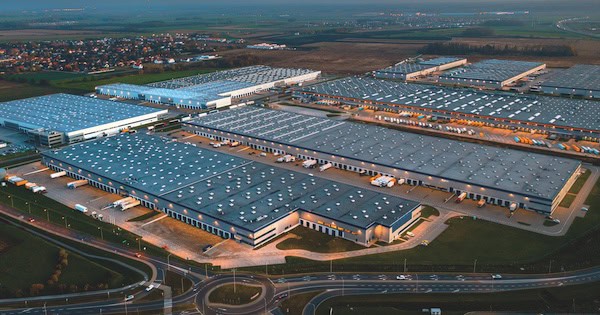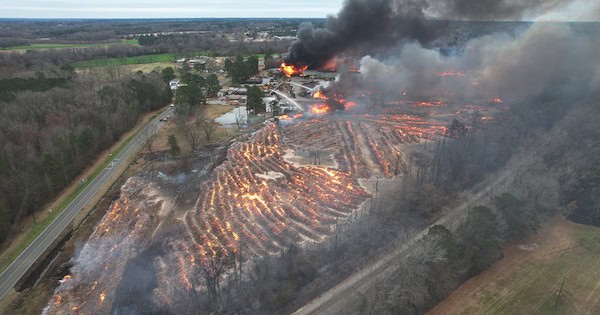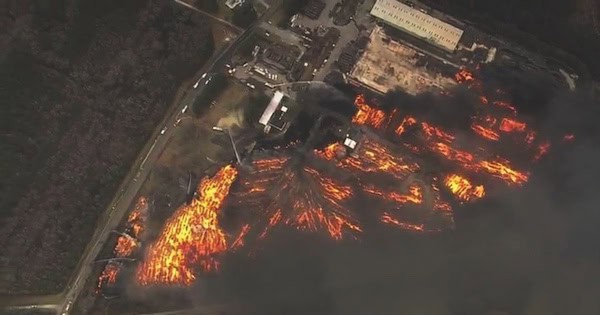Evaluating Fire Risk And Readiness For Roofing Systems

Millions in damage. Major operational downtime. Potential injury and even loss of life.
These are only a few consequences of a significant fire in a commercial facility. According to the National Fire Protection Association (NFPA), over a five-year period between 2017–2021, more than 36,000 fire events occurred at industrial or manufacturing properties, with annual losses of 22 deaths, 211 injuries, and $1.5 billion in property damage. NFPA further estimates that a warehouse fire averages more than $300 million in direct property damage.
Figures like these, with both human and financial impact, should prompt every building owner or facility manager to evaluate their building’s fire preparedness. One area worth assessing may be unexpected but is critically important: the roof system.
Commercial roof systems are sometimes overlooked as a key part of the building envelope. However, the system’s ability to prevent or contribute to the spread of flames can make a significant difference in the event of a fire originating outside of a facility. Let’s explore the reasons why.
Testing Standards For Fire Performance
To start off, it helps to understand how roof systems are classified based on fire performance.
In the U.S., two primary test methods are used to evaluate commercial roof systems under fire conditions originating outside the building. These are ASTM E108 and UL 790, each of which are referenced in the International Building Code (IBC).
The standards involve three key fire tests. The first is the intermittent flame test, which evaluates the resistance of the roof covering when exposed to intermittent fire conditions. It is required if the roof is installed on a combustible deck. The second is the spread of flame test, which simulates burning embers that have landed on the roof, and is required for both combustible and noncombustible decks. Third is the burning brand test, which determines the roof’s ability to resist ignition, fire spread, and burn-through. The test is performed by placing a burning brand on the surface of the roof covering and is required for combustible decks.

Fire Ratings For Commercial Roofs
A roof’s fire classification is based on performance in these tests and falls into one of these three categories:
Class A is the highest fire-resistance rating. It is typically a requirement for buildings that may be more at risk for fires or by local building codes in areas prone to high wildfire risk. Class A systems withstand severe fire exposure, offer a high degree of fire protection to the roof deck, and do not pose a flying brand hazard.
Class B exhibits moderate fire performance, resisting flame spread up to eight feet over the designated test time. This rating is applicable to roof coverings expected to stand up to moderate fire exposure. Similar to Class A roof systems, those rated as Class B should not present a flying brand hazard.
Class C designates limited protection against fire. The roof system must resist flame spread up to 13 feet over the designated test time. This classification is intended for light fire exposure, offers minimal fire protection for the roof deck, and provides no flying brand hazard.

Real-World Performance
While a Class A rating is the most stringent classification, it does not tell the full story.
For example, these tests evaluate systems as complete assemblies: the membrane, insulation, fasteners, and other potential components. Even with a Class A rating, there is no requirement that the system not burn—only that it burns slowly enough to limit flame spread within a desired distance during the test duration.
In real-world scenarios, material composition makes a difference. For instance, single-ply roof membranes typically used in commercial roof systems are made from a variety of materials, including thermoplastic polyolefin (TPO), ethylene propylene diene monomer (EPDM), polyvinyl chloride (PVC), or ketone ethylene ester (KEE). Not surprisingly, these materials do not all demonstrate the same or even similar fire performance—some may contribute to flame spread more than others.
For example, while TPO is a popular choice due to its low cost, independent testing results involving ASTM E108 have shown that TPO membranes can contribute to significant flame spread across a roof. And from one NFPA 701 vertical burn test, one TPO specimen, approximately five inches wide by 48 inches tall, exhibited melting and dripping behavior while burning for more than 38 minutes before fully consuming the sample itself. Conversely, some high-performance roof membranes have demonstrated self-extinguishing properties in similar burn tests and are also proven to minimize flame spread and damage severity in similar roof system tests, supporting increased operational security and risk mitigation.
Case Study: TPO Vs. KEE
One membrane material, KEE, has demonstrated superior performance in real-world fire scenarios.
A recent case illustrates this clearly. Prolec® GE Waukesha is a prominent power transformer manufacturer supporting critical electrical infrastructure. On the evening of Feb. 11, 2023, a fire broke out at an industrial salvage yard near the Prolec GE facility in Goldsboro, North Carolina. The salvage yard housed thousands of wooden railroad ties across more than 20 acres, neatly organized into close stacks.
As is typical with railroad ties, they had been coated with creosote to preserve the wood. Once the fire started, this flammable coating accelerated the blaze. As flames intensified, embers launched into the air, threatening nearby properties, including the Prolec GE facility, where embers began to land onto the building’s roof.
Portions of the roof included both TPO and a KEE-based roof system (in this case, a FiberTite® roof system). About 160 burn holes developed in the TPO section; the KEE portion, by contrast, was completely intact. Twenty to 30 soot marks were evident and showed no penetration of the KEE membrane, thanks to its self-extinguishing properties. With minimal cleaning and inspection, the KEE portion maintained its full warranty from the manufacturer, while the TPO portion of the roof required total replacement.
Different Exterior Fire Threats To Commercial Roofs
Today’s commercial rooftops support many types of equipment, operations, and electrical infrastructure, all of which have the potential to start or further contribute to a roof fire. As shown in the Prolec GE example, external sources may represent a threat that building owners and operators cannot control.
Consider also that a rooftop fire comes with its own unique threats. Because commercial roofs typically lack fire detection mechanisms, a fire may go unnoticed until it has the chance to spread, slowing fire department response and increasing potential consequences. Rooftops are not equipped with automatic sprinkler systems that can quench flames. Further, wind can accelerate the spread of fire across a roof’s surface. Rooftop fires also pose unique challenges for emergency responders; firefighters must access the roof by climbing the structure. In severe cases, the rapid spread of flames can compromise structural integrity, leading to the risk of collapse and forcing a response from a distance.

All of these are reasons to remain vigilant about mitigating rooftop fire risk. One important step in doing so is monitoring potential sources of rooftop fire, including:
Electrical systems. A commercial roof is often home to major electrical equipment, including large HVAC units, rooftop solar panels, and more. Electrical failures, including arc faults, ground faults, and short circuits, can all act as ignition sources.
Exhaust systems. Commercial and industrial exhaust systems rely on duct materials that penetrate the roof system, and operational failure has the potential to cause a fire. These systems may also expel contaminants onto the roof that increase the risk. For example, commercial kitchen exhaust can contain flammable fats or oils.
Severe weather events. Severe weather has the potential to lead to a fire. Lightning strikes during a thunderstorm or a nearby wildfire can pose a risk of igniting a fire; even if a building is not in immediate danger from wildfire spread, flying embers may land on the rooftop.
Maintenance and repair. Rooftop systems require routine maintenance that may introduce fire risk. For example, repairs involving arc welding may introduce molten metal and sparks. Discarded cigarette butts from workers on the roof pose danger of fire. Additionally, in new construction applications, trades working on adjacent surfaces and systems as the roof is installed add to the potential of unintentional ignition.
Excessive debris. Though it is not its own source of ignition, excessive debris buildup on a rooftop can become fuel for a burgeoning fire. For example, accumulated dead leaves may quickly ignite and elevate the spread and severity.
Facility managers and building owners can enhance the fire-readiness of commercial properties by choosing a roof system that demonstrates proven performance under fire.
In addition, roof system design, construction, and installation are equally important to minimizing risk. Seek professionals who understand how to design for and mitigate fire risks and specialize in high-performance roof systems. Proper installations should include in-process inspections to identify any potential issues, specifically those that may contribute to increased fire risk. By working with trusted suppliers and contractors, building owners can better protect their assets and the people who depend on them.
By Ryan Van Wert
From the October 2025 Issue of Facility Executive
Van Wert is the Technical Services Manager for FiberTite Roof Systems at Seaman Corporation. He has been in the commercial roofing industry since 2017, following a career in structural design. Van Wert has extensive experience in the construction industry, including expertise in building inspections, mold inspections, and energy audits, bringing a broad range of technical capabilities to his role.
Do you have a comment? Share your thoughts by sending an e-mail to the Editor at [email protected].

